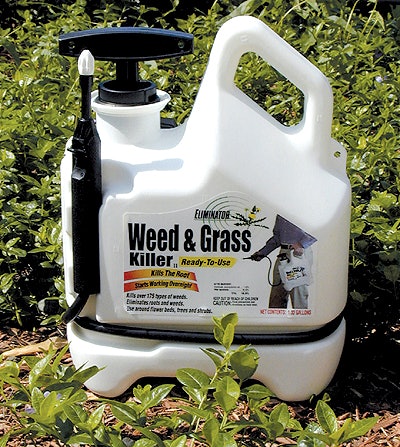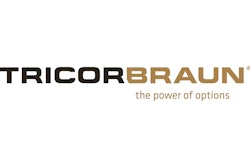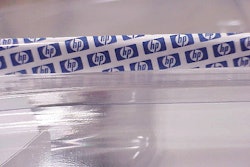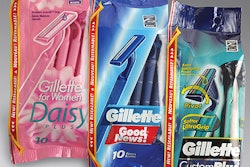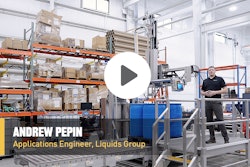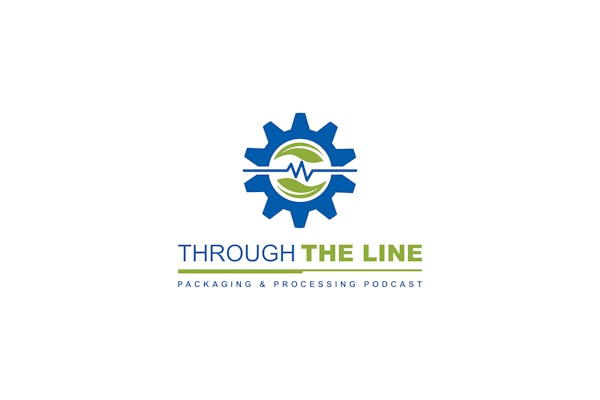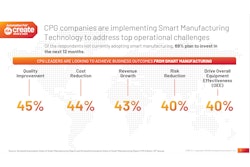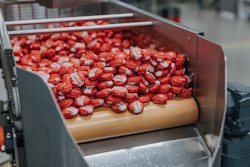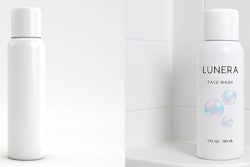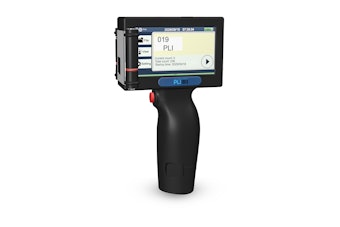Wal-Mart customers have an exclusive opportunity this year to make weed killing a little more convenient. Gro-Tec, a division of Pennington, is marketing the Eliminator Weed & Grass Killer in a unique pump-up pressure tank that makes applying the product far easier.
The heavy-duty, high-density polyethylene 1.33-gal F-style container is a creation of Gro-Tec, designers at TricorBraun, and bottle manufacturer H.D. Hudson Mfg. Co. The three partners designed the jug and produced sample containers on a tight timetable, beginning in January 2003, for introduction this spring.
What makes this package particularly significant is that it virtually combines two products often purchased at garden centers or home centers: a liquid weed killer and a pump-type of pressure tank.
Most competitive products use a manual squeeze-and-spray applicator that can cause hand fatigue. “A conventional hand sprayer takes a few seconds to pull the handle back, and it sprays for about twice that time,” says Dan Pennington, senior vice president of Madison, GA-based Gro-Tec. “With our Pump and Spray bottle, five or six pumps will produce a spray for three or four minutes. So we’re giving the consumer a product that requires much less effort to dispense.”
Another custom container
Gro-Tec has been a TricorBraun customer for some time, and this project was like most custom designs, according to Jim Muster, TricorBraun packaging consultant. “I think this was the first time our company has been involved in creating a container that could hold pressure,” he says. “It’s very robust because we didn’t want to make any sacrifices. We wanted it to be able to be used over and over, one that could be refilled several times. Yet it had to be inexpensive enough so that the average household would buy it.”
Gro-Tec product manager Chanin Gill sketched out what he wanted in the finished container and then turned it over to TricorBraun. “I couldn’t get everything I wanted, but all the major features were included,” Gill says. These features were the ergonomically designed handle, a ridge indented around the base for the hose, and an area for the nozzle. The nozzle and dip tube are secured via pressure-sensitive tape. A plastic locking cable tie secures the pump to the molded handle.
TricorBraun designers took Gill’s sketch and developed a three-dimensional image of the container. “After some changes were made to the design, Hudson’s group took over and made sure the finishes were suitable for its pump and determined empirically how the hose would be wrapped around,” says Muster. “We built a prototype or two along the way before the 3-D drawings were sent to a tool-making company.”
Making a pressure tank
“The Pump and Spray bottle has sidewalls quite a bit heavier than normal to withstand the pressure,” says Pennington. “As a pressure vessel, it has to meet certain specifications. Along with the pump mechanism, the bottle weight makes it more expensive than a conventional HDPE jug.”
The hand pump has a special pressure-limiting device built in so that users can pump no more than 20 psi, says Bill Hudson, president-international at H.D. Hudson. “However, the container is molded to withstand a burst pressure of at least 60 psi. So we have a threefold safety factor built into this container.”
The HDPE container weighs 520 g, just about double that for the same capacity in a nonpressure-withstanding container. The wall thickness is 0.022”, which is substantially heavier than required for a conventional 1.33-gal container, Hudson says.
Hudson is primarily a global manufacturer and marketer of sprayers and dusters that are used commercially, in lawn and garden applications, and also in public health uses. It doesn’t often get into commercial blow molding, but TricorBraun couldn’t find another blow molder willing to take on the task, given the timing and cost parameters.
Most of Hudson’s blow molding is for its own round pressure tanks, so molding this container was a real challenge, Hudson admits. “We were told that the container needed to fit into a certain footprint for Wal-Mart’s retail shelf. Based on those constraints we had to help find a container shape that would present a ‘billboard’ on the shelf and be comfortable for the user,” Hudson recalls.
For example, this jug has a curved, four-footed base design that Hudson says helps not only in the distribution of the resin, but also helps in the distribution of the stress created by the pressure. HDPE was selected for both product compatibility and its blowing properties.
When asked about the economics of selling the product in a pressure tank at retail prices equivalent to a nonpressure container, Hudson joked, “It’s a miracle!” Wal-Mart sells the 1.33-gal tank for under $11. Gro-Tec also bottles the Eliminator in a concentrated form so the tank can be reused several times.
Better performance
“Our container is of the same quality as a tank sprayer because essentially that’s what it is,” Pennington points out. “It’s made to withstand a lot of wear and tear. It has a better performance rating than our competitors’ containers. And, after testing, we found it has a much better consumer satisfaction rate as well.”
The jug is decorated by a p-s front label, a second label on the shoulder that indicates the bottle is refillable, and a back label—all from CCL Label. The three-panel back label includes a base label of 2-mil polypropylene that’s printed in a single color. The top panel is printed in six colors, and its back is printed in two colors. All printing is rotary letterpress.
Gro-Tec fills and labels the jugs in-house.
Getting into bottle business?
For now, the Pump and Spray jug for a pesticide product is being restricted to Wal-Mart’s exclusive Eliminator brand. “It cost a lot of money to develop this package, and Wal-Mart is a very good customer for us,” says Gill. “So we wanted to offer them an exclusive for this package and product.” However, Gro-Tec plans to use the jug for some new products in different applications.
“We’re expanding the use of this container into some liquid de-icer products and some liquid insecticides,” says Pennington. “Some of our additional products will require fluorination of the containers, and TricorBraun will handle that operation for us.” Fluorination yields extra barrier properties that allows HDPE to be used for some chemicals that otherwise wouldn’t be compatible with the resin.
In addition, Gro-Tec will also offer the container to other companies that make noncompetitive products, according to Gill. “We’ve offered the container to one company for its product, and it’s now selling the product into the trade under its own brand,” Gill says. “That put us in the container business. Several other well-known companies have contacted us about using the jug for their products.
“The package has been in very high demand. And there are a lot of potential applications.”
